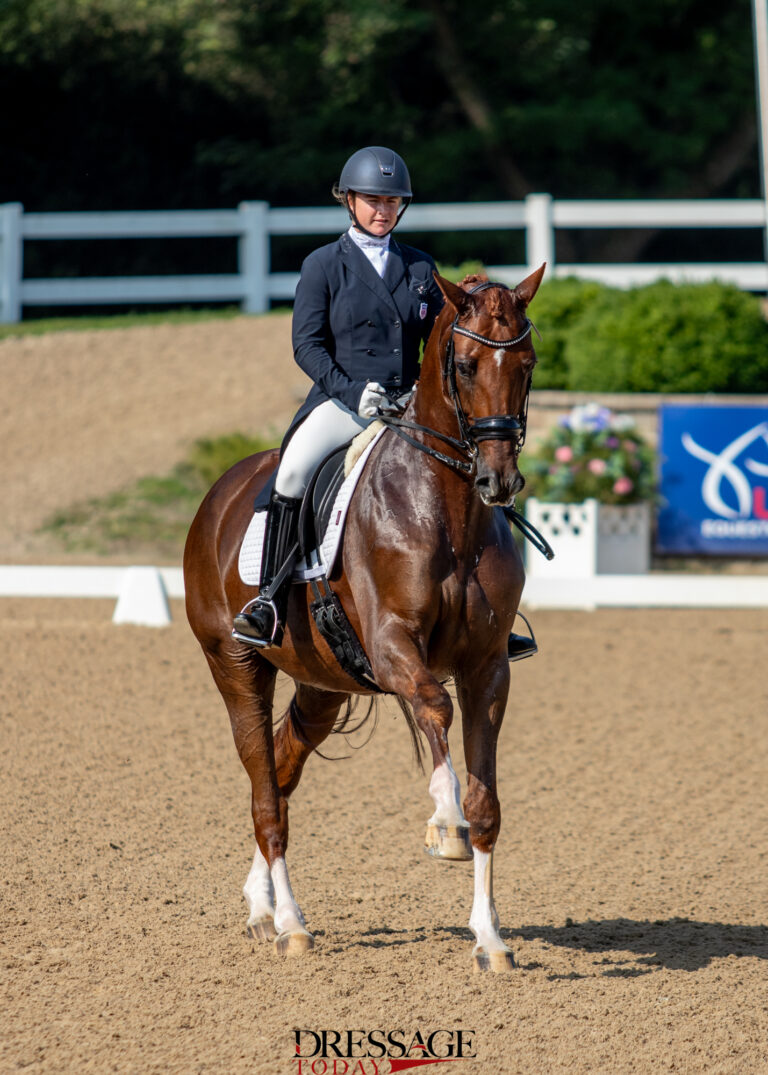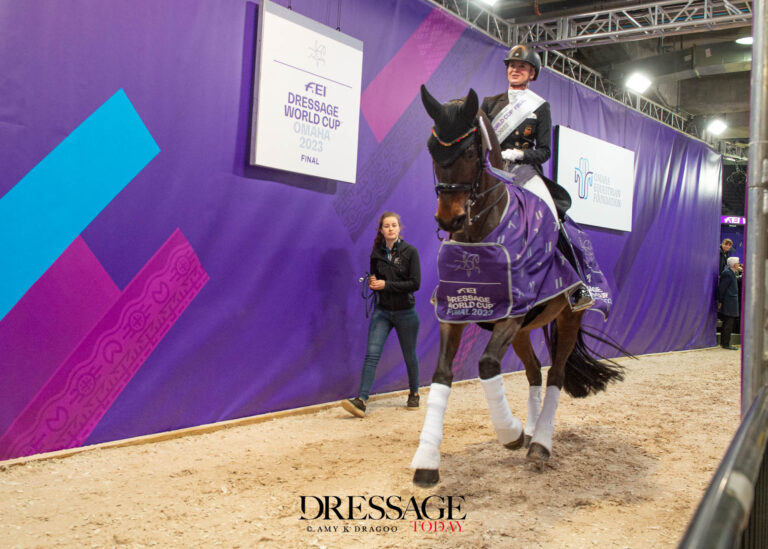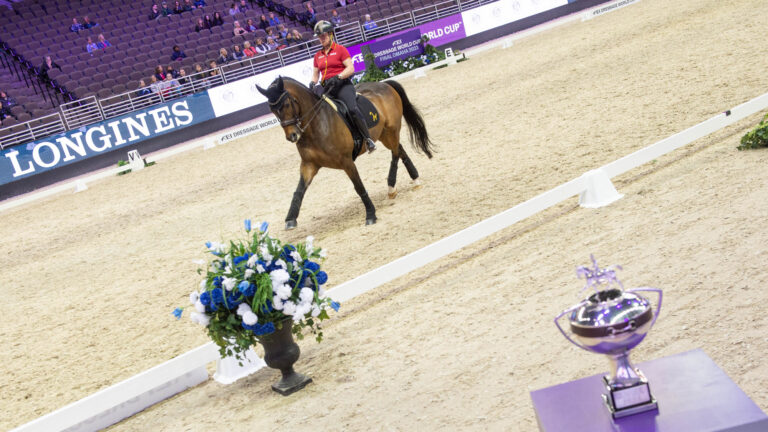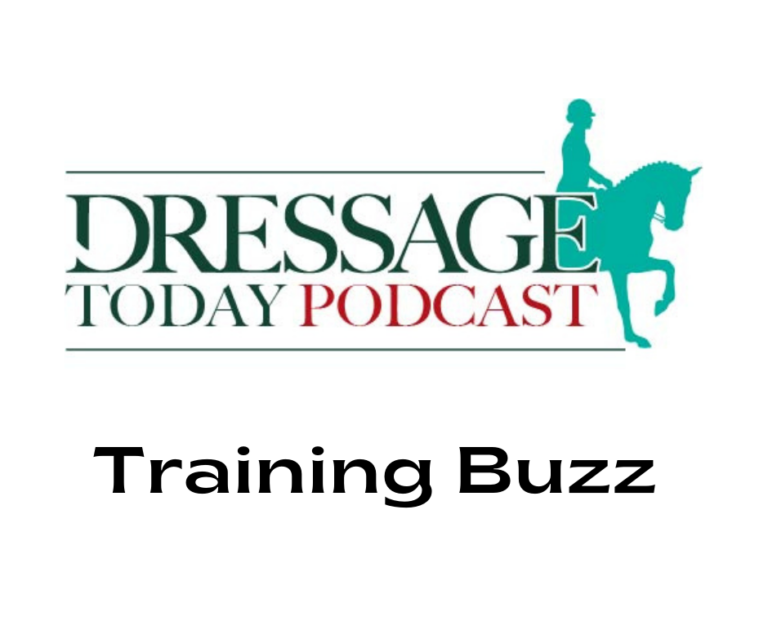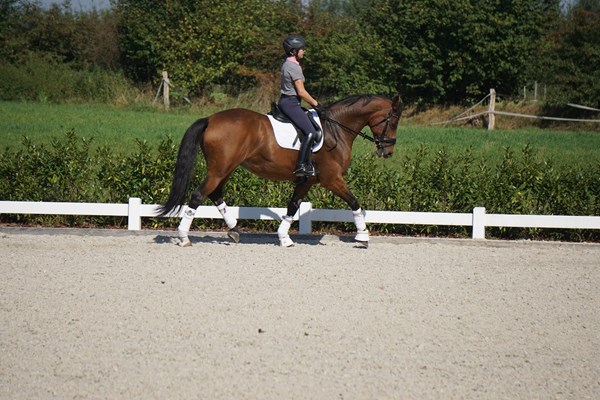German Olympic gold medalist Ingrid Klimke is following in the famous footsteps of her late father, dressage master Reiner Klimke. Like her father, she is both an international eventing and dressage icon and, as a five-time Olympian, she has created her own world-renowned legacy.
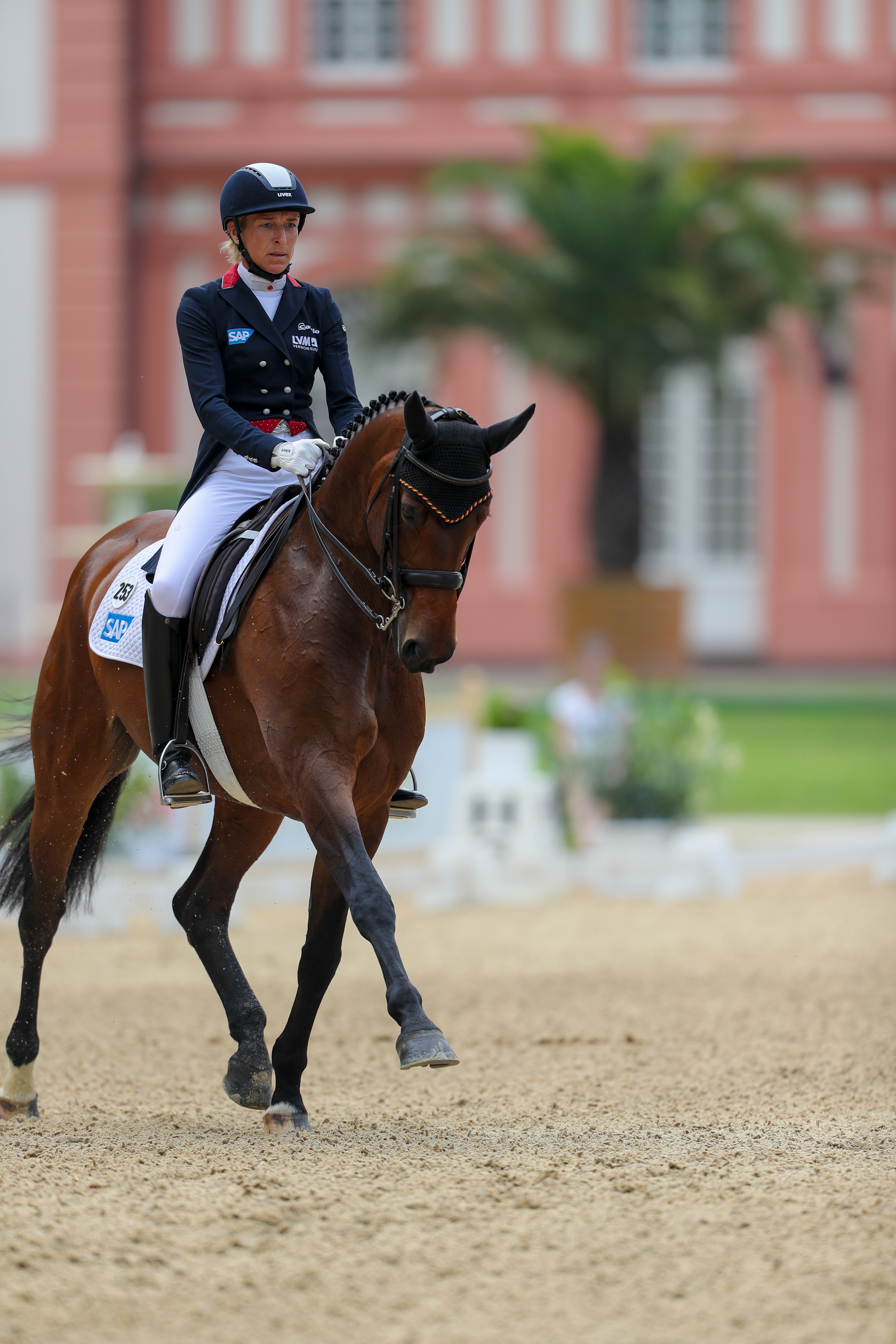
)
Born in Münster, Germany, in 1968, Klimke competed in dressage, show jumping and eventing as a youngster. After years of consistent training she came to understand the necessity to develop an intensive bond with her horses and to never overburden them. “It is essential to build the horse’s confidence and willingness to do better,” she says. While she continues to develop modern athletic dressage horses Klimke remains true to implementing a classical approach to training.
Among Klimke’s many accomplishments is her ability to train young horses. Through the years, she has competed many youngsters at one of the world’s largest Young Horse shows—the Bundeschampionate in Warendorf, Germany. Each year, the Bundeschampionate sees the best young horses in Germany compete to be one of 21 top-offspring horses and ponies from German breeding selected as national champions in the various disciplines and age groups. In the following interview, we hear how Klimke works to train her young horses up through the levels and prepares them for Grand Prix competition.
DT: There is a long but defined road from the Bundeschampionate in Warendorf, Germany, to Grand Prix. Only very few skilled riders and trainers can train champion young horses and develop the same horse into an international Grand Prix horse. Why?
IK:It takes a lot of knowledge and experience to train any horse to Grand Prix. And not every partnership works out. Not every skilled trainer has the luck to work with a horse who stays sound, but I think we are seeing more and more horses competing at the Grand Prix level, so there are definitely more trainers succeeding. Dressage has become much more popular outside Europe, and in North America, especially, breeders and trainers are more and more educated so they are being rewarded with success.
DT: What are some of the training challenges one encounters after winning a 6-year-old FEI Young Horse class and then transitioning to the first dressage class for youngsters at M-level (the highest class 6-year-olds can compete in Germany)?
IK: There should be no sudden change in the routine. The training process continues with exercises to increase the strength for self-carriage and lateral suppleness knowing that the standard expected by the judges also increases with the level of test. The only additional requirement in the M-level test is the rein-back. The main difference between the judging of the Young Horse tests and the standard technical tests is that the judges for the Young Horse tests sit together and agree on marks for the gaits and the evaluation of the potential and training progress of the horses. They are giving an overview of the horse and his or her dressage competition potential without giving marks for individual movements, whereas in the M test, as in all technical tests, the judges sit separately and each movement is marked with collective marks at the end.
DT: Are all well-bred horses, when paired with the right rider and trainer, capable of training for the Bundeschampionate and progressing through all of the German levels up to Grand Prix?
IK: It is important to allow the young horse to show by his temperament and level of maturity whether he is ready and able to compete in the FEI Young Horse tests. Even in the hands of the best trainers, some highly talented young horses may need more time to mature physically and/or mentally in order to meet the challenges of competition. It is true that it can be tempting to push a young horse to meet the requirements of these levels in order to show him off. We have to be wise enough to really put the horse’s welfare first and be honest with ourselves about the readiness of each horse in our care. And many talented horses who are not ready for these Young Horse tests still go on to compete at the top levels. Competing at the Bundeschampionate is not a fail-safe way to predict future success, just as not competing at these events does not preclude reaching Grand Prix.
DT: Even in the Olympics we sometimes see a lateral walk in the collected walk. What are some common mistakes that deteriorate the walk?
IK: The walk must be ridden very carefully. Some horses react to the collecting exercises by losing the perfect four-beat rhythm. We must make sure when collecting the walk that we do not tighten the neck and the back. There must be plenty of opportunities to let the horse stretch on a loose rein to maintain the relaxation over the back. Of course, some horses are prone to being lateral and with these horses, we can utilize exercises like shoulder-in and walking cavalletti to help return the footfalls to their correct sequence. But for a truly confirmed lateral walk, we cannot expect the judges to ignore it.
DT: For horses who have a very big overstride, how do you address the development of collected walk and avoid the propensity for a lateral walk?
IK: A very big walk can indeed present problems but not always. These types of horses should not be asked for too much collection too soon. If we lose the correct rhythm in the gait, we have lost everything we strive for, which is to improve the horse’s self-carriage, suppleness and harmony with the rider. This is another example of a time when walk cavalletti can be of help since to negotiate the cavalletti, the horse must step in the correct rhythm.
DT: How would you correct a horse who is tense in collected walk and lacks throughness?
IK: It is important to recognize the origin of the tension. If it is coming from the horse sensing what he should do next, then the trainer must be more unpredictable: Only collect for a few moments at a time and immediately move on to a free walk or try some lateral work. Sometimes a longer walk at the beginning can result in a relaxed horse and, again, it is always good to have the cavalletti handy. Definitely avoid pushing too hard and risking a bad training day that you and your horse will remember.
DT: Coming from the FEI Young Horse classes, where the horses are encouraged to move with large and expressive gaits, how do you begin training the same horse in trot not only to take shorter strides but quicker strides without blocking and making him tense?
IK: Yes, it is true that the expressive movement can sometimes come at a cost. There are times when we see the neck short and tight and the horses lose the suppleness over the back. As with all good training, the goal is to help the horse reach his athletic potential while preserving his health and mental well-being. If I am going to ride such a tense horse, I must first review or perhaps allow him to stretch correctly over the back to the contact. If this is difficult at first, then it is the only exercise for the day. We may also want to rediscover the working trot, so that when we collect, we are only shortening the strides and increasing the cadence but not the tension.
DT: How do you translate this work into piaffe and passage transitions?
IK: We want the horse to be quick off the aids but not to lose his natural rhythm and tempo. This level of collection demands that the horse be strong enough to transfer more weight to the hindquarters. In order for this to happen, the horse has to allow the rider to engage the hind legs while maintaining the poll position, and to do that, the horse must already be very light to the seat, leg and hand. The transitions take practice. This is the moment when coming into piaffe, the horse can make a mistake and walk if the half halt is not well understood. The transition forward to passage is the time when a loss of engagement results in some collected trot steps. Tension can creep in when the horse anticipates this degree of collection, and trainers must be sensitive to the ability of the horse to remain confident and relaxed in his work. Better to take a few good steps as the horse is learning than over-face the horse. And always be ready with lots of praise and treats.
DT: How do you develop the canter in preparation for pirouettes?
IK: In my stable we like to jump. And perhaps you have seen judges’ remarks about canter work. They like to say the canter needs more jump. Well, that is one of the things we and the horses love to do. Cavalletti work is so helpful in developing the horse over the back, and we can change the distance between the obstacles to encourage some shortening or lengthening of the strides. When it comes to pirouettes, I believe we all have been taught that you must be able to collect the canter and go out of collection on a straight line before asking for the turn. This is good for many reasons. It teaches the horse that maybe we do a pirouette and maybe not!
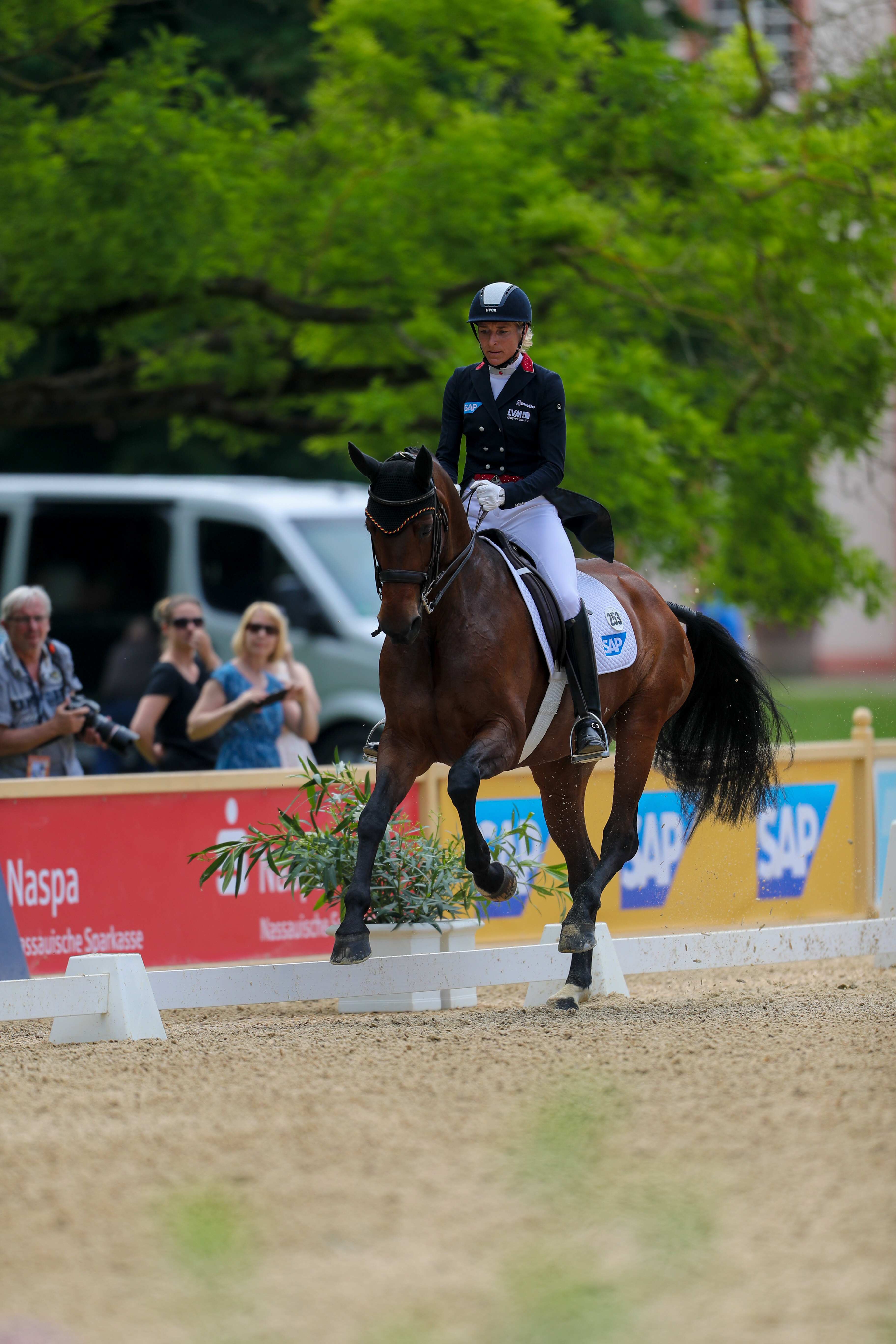
)
DT: What exercises do you use to develop the appropriate collected canter in preparation for tempi changes?
IK: We don’t need a special collected canter for tempi changes. If the horse is in self-carriage and able to collect, the most important things are that the changes are clean, through and are clearly going forward over the ground and have good expression (or jump).
DT: Your cross-training approach not only assists in the physical soundness of your horses but also the mental harmony of horse and rider. Can you explain further this methodology and its benefits?
IK: I think we all like to get out of the office, and at our barn, we and the horses definitely love to hack. If we are taking a very young horse out, there are always several babysitters to show the way and give confidence to the young one. It is good for a horse to understand how he has to move on natural ground, and the countryside includes hills and water and is safe, but they really have to pay attention. We love to take them all out together—the dressage horses and eventers.
DT: Different muscles are utilized for various disciplines. How do you weave this all together when training a young horse to Grand Prix?
IK: The differences are really not so big. We are all working toward making the horses supple and strong, elastic and obedient. While it is true that the eventers may have a freer outline when galloping than a dressage horse does in extension, I believe that even the dressage horses should gallop to develop their full range of motion.
DT: What would you consider the most important difference between a Grand Prix dressage horse who has been trained with variation and one who has spent his whole life in an arena?
IK: Some horses seem able to cope with this kind of routine, but staying in the arena can lead to a lot of repetition of exercises without much variation. If we think about the mental well-being of the horse, then it is good to remember that they are animals and it is only normal that they are allowed to be out in nature with the rider as well as [at liberty] in the paddock.
DT: By example, you are leading the modern dressage world in a more positive direction. How does this make you feel to be such a great influence?
IK: It is a big responsibility. But my father [Reiner Klimke] taught us all to respect the horses and learn from each one even as we train them. If I am successful it is because of the training I received from him and I try every day to imagine what would he do with whatever little problem comes along.
DT: What would be your best advice at this time for young, aspiring trainers?
IK: Find someone to work with whose horses are enjoying their training. Be prepared to improve your riding every time you ride. Take advantage of opportunities to audit lessons and watch professionals training. Practice patience with horses and your students.
DT: Up until now you have been highly successful. And yet, you still have a long career ahead of you. What, in the end, would you like to leave behind as your legacy?
IK: I would be happy if I have lived up to my father’s expectations and carried on his legacy of educated and compassionate training.

)
More Than an Equestrian
Aside from all her equestrian success, German Olympian Ingrid Klimke is married and a mother of two and a successful author of three books on her training methods as well as eight training DVDs. She is involved in charity work as the Ambassador for “Kids Need Fans!”—the sport initiative of the Children’s Assistance Plan International Germany, a group that works to advance children’s rights and equality for girls. Klimke is also a patron of the Child Protection Organization in the Münster region in Germany.


